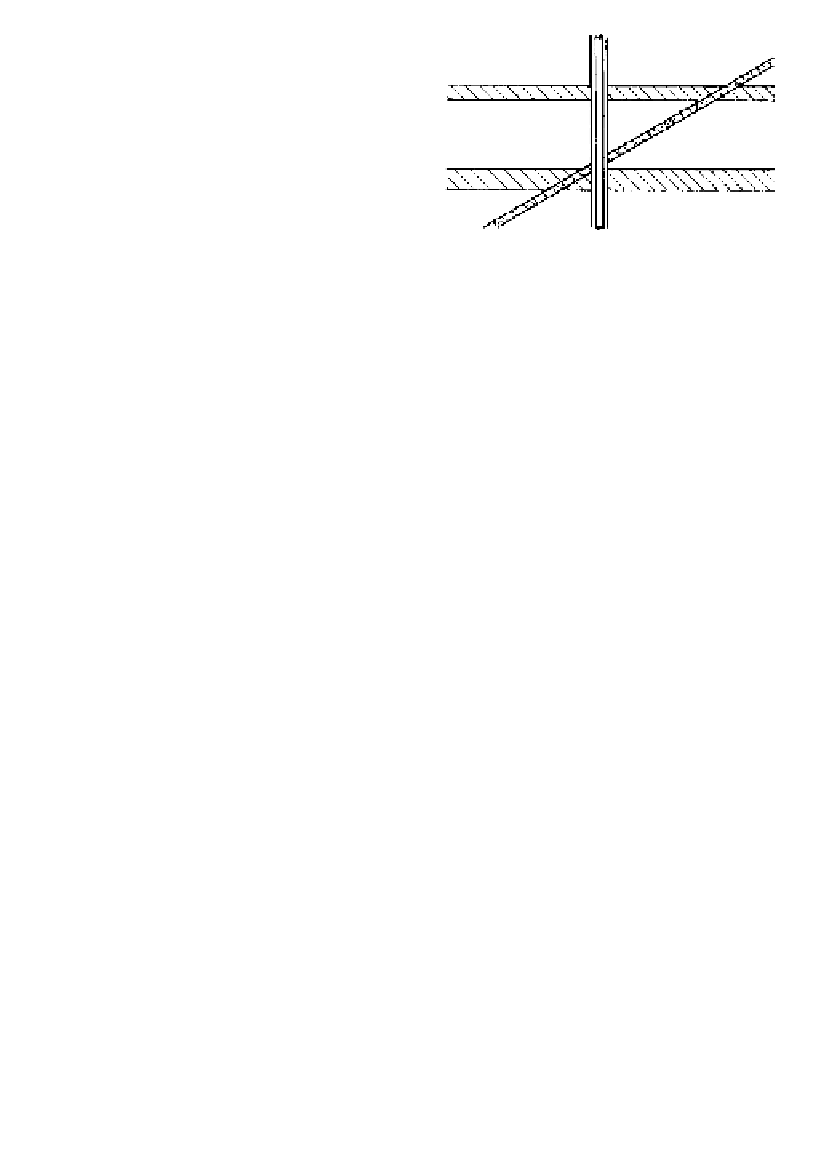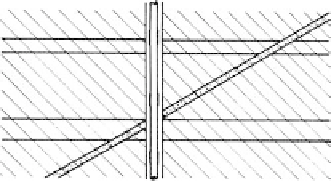Environmental Engineering Reference
In-Depth Information
(a)
(b)
(c)
(d)
Figure 18.31.
Multiple grout system (Brett, 1986). (a) ground properties, (b) first stage cement grout,(c)
second stage bentonite grout, (d) third stage chemical grout.
In many cases in the past where chemical grouts have been used to reduce leakage under
dams on alluvial sand and gravel foundations, it would now be more reliable and
less costly to use slurry trench or diaphragm wall cutoffs constructed of bentonite or
bentonite-cement. These give a more controllable uniform width of low permeability cutoff
than can be achieved by grouting and would generally be the authors' preference (see
Chapter 9 for more discussion on this matter).
Examples of the use of chemical grouting in dams are given in Littlejohn (1985), Brett
and Osborne (1984), Davidson and Perez (1982) and Graf et al. (1985).
It will be clear from the above discussion that chemical grouting, although feasible for
some jobs, should be viewed with some caution. Most chemical grouts are potentially
toxic to some degree, some to the point of being of serious concern. Unless chemical
grouting can be justified on cost grounds and is environmentally safe to use in the partic-
ular case under consideration, the authors would advocate not using them.
Like epoxy compounds and some other newly-developed compounds, chemical grouts
are not the answer to all problems. If not mixed correctly or not applied correctly, they
may cause more problems than they solve. The fourth author spent 2 years proving an ill-
conceived grouting job done with chemical grouts was safe for the public; he is now con-
vinced the chemical grouting did nothing to improve the situation, making the whole
exercise an avoidable one if careful thought had been applied at the start of the design
phase.





